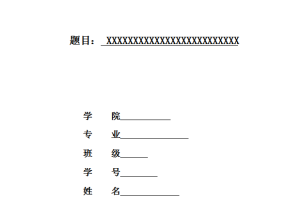1 绪论
1.1研究背景及意义
2 财务风险概述
2.1风险的定义
2.2财务风险的定义
2.3财务风险的特征
2.4财务风险的分类
3财务风险原因分析
3.1外部原因
3.1.1复杂多变的外部经济环境
3.2内部原因
3.2.1缺乏对应收账款的日常管理
4财务风险措施应对
4.1灵活应对多变的外部环境,提高竞争力
4.2提高财务管理人员的风险意识和素质水平
4.3提高应收账款的日常管理
4.3.1控制应收账款的发生,销售人员对应收账款第一负责制
4.3.2应收账款的跟踪分析
5严格控制销售费用
5.5.1采用新的销售模式
5.5.2加强销售费用预算管理
5.2寻求合理的资本结构
5.2.1 合理选择筹资渠道,寻求筹资来源和方式的多样化
5.2.2 控制企业适度的筹资规模
6总结
参考文献
摘要
随着我国经济市场化程度逐步提高,企业在其经营中遇到的不确定性、风险因素也日益增多,然而企业经营面临更多的是财务风险。中小企业是我国经济中一支非常重要的力量,但由于中小企业规模小、融资难等特点,决定了其在经济发生波动时面临更大的财务风险。由美国次贷危机引发的金融危机,为我国中小企业的生存与发展带来了巨大的不确定因素。在金融危机的影响下,能否有效的防范财务风险,关乎中小企业的生死存亡。因此,对中小企业的财务风险进行分析与防范成为企业财务管理的重要课题之一。
关键词 中小企业;财务风险;分析;防范
Abstract
Gradually increase with the degree of marketization of China’s economic , uncertainties encountered by companies in their business, risk factors for an increasing number, however, enterprises face more financial risk. Small and medium-sized enterprises(SMEs) are a very important force in our economy, but because of the small scale and difficulties in financing of SMEs, they will face greater financial risk in the economic fluctuations. The financial crisis triggered by U.S. subprime mortgage crisis has brought huge uncertainties to the survival and development of SMEs in China.Under the influence of the financial crisis, the ability to effectively guard against financial risks related to the survival of the SMEs. So, the analysis and prevention of financial risk for SMEs is becoming one of the important subject of financial management.
Keywords Small and medium-sized enterprise Financial risk Analysis Prev





